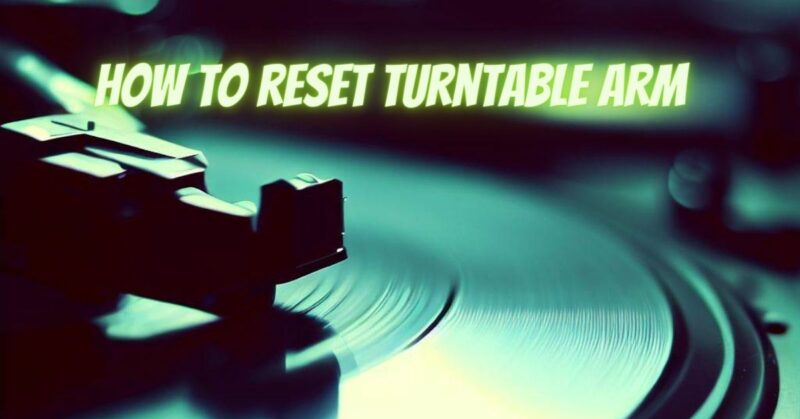Resetting the turntable arm, also known as the tonearm, can be necessary when encountering issues such as misalignment, skipping, or unresponsive tracking. By following a few simple steps, you can reset the turntable arm to its default position, ensuring proper performance and accurate tracking. In this step-by-step guide, we will walk you through the process of resetting the turntable arm effectively.
Note: The specific steps may vary depending on the make and model of your turntable. Always consult your user manual for manufacturer-specific instructions.
- Power Off and Lift the Tonearm: Before resetting the turntable arm, ensure that the turntable is powered off to prevent accidental damage. Gently lift the tonearm from the resting position, typically using the tonearm lift lever or cueing lever. Be careful not to apply excessive force or drop the tonearm abruptly.
- Return the Tonearm to Its Resting Position: With the tonearm lifted, gently move it back towards its resting position. Be cautious not to force the tonearm or make any sudden movements. Slowly guide the tonearm back, aligning it with the tonearm rest or armrest.
- Engage the Tonearm Lock (If Applicable): If your turntable has a tonearm lock or transport lock feature, engage it to secure the tonearm in place during the resetting process. This prevents any accidental movement while handling the turntable or performing maintenance.
- Check for Proper Alignment: Once the tonearm is back in its resting position, visually inspect it for proper alignment. Ensure that the tonearm is parallel to the platter or record surface and centered within the cartridge mounting area. Any misalignment may result in tracking issues or playback errors.
- Verify Correct Balance and Tracking Force: Check the balance and tracking force of the tonearm. The tonearm should be balanced horizontally and vertically to ensure accurate tracking and minimize record wear. Adjust the counterweight or balance control knob as needed to achieve proper balance and set the tracking force within the recommended range specified by the cartridge manufacturer.
- Calibrate Anti-Skate Setting: The anti-skate setting helps maintain proper tracking stability and prevents the tonearm from being pulled inward or outward excessively. Calibrate the anti-skate mechanism, typically a dial or knob near the tonearm base, to match the recommended tracking force or slightly lower. Refer to your turntable’s manual for specific instructions on adjusting the anti-skate setting.
- Test the Tonearm: After resetting the turntable arm and making necessary adjustments, power on the turntable and test the tonearm’s functionality. Lower the tonearm onto a record and ensure smooth, controlled tracking. Listen for any skipping, distortion, or other playback issues. If any issues persist, further troubleshooting or professional assistance may be required.
Conclusion:
Resetting the turntable arm is a straightforward process that can help resolve alignment, tracking, and playback issues. By carefully following these steps, you can ensure the tonearm is in its proper resting position and perform any necessary adjustments to achieve optimal performance. Remember to consult your turntable’s user manual for specific instructions and recommendations related to your model. With a properly reset and calibrated turntable arm, you can enjoy high-quality playback and extend the life of your vinyl records.


